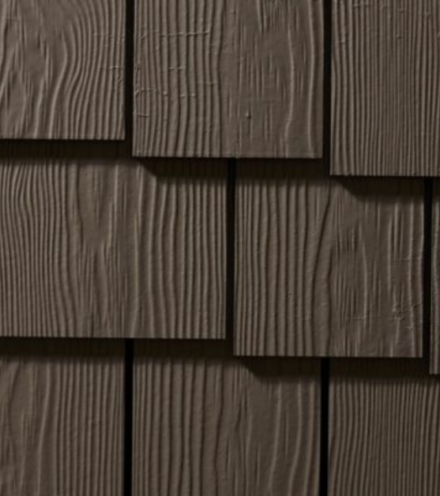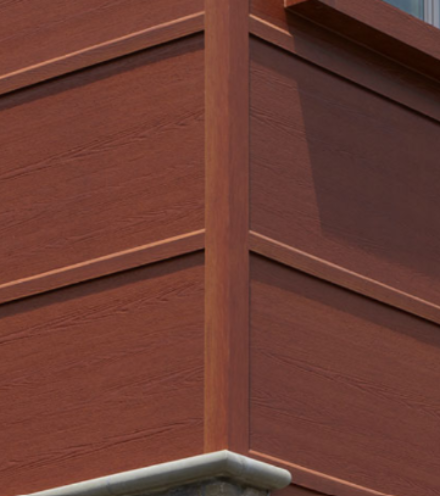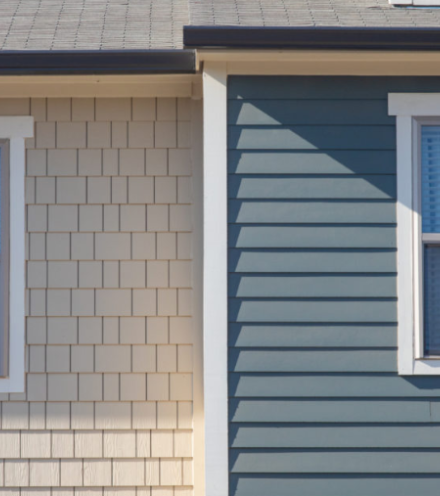The right siding can make a big impact on your home’s exterior, both aesthetically and functionally. But with so many options on the market, it’s important to know what’s out there. Composite siding has become super popular lately, but is it the best choice for your home? In this article, we’ll do a deep dive into what composite siding is, explore its benefits, and look at some superior alternatives.
What is Composite Siding?
Many ask: what is composite siding made of? Well, that depends. Composite siding is a modern exterior cladding option made from a blend of materials, usually including wood fibers, resins, and plastics. The goal when creating composite siding was to create a product that looked like wood but without all the hassle of a natural material.
The Pros and Cons of Composite Siding
Composite siding is often chosen for its many benefits, but it’s not without its downsides. Here are the advantages and disadvantages of composite siding.
The Pros of Composite Siding
Composite siding comes with several appealing benefits that make it a super popular choice for homeowners, including:
Aesthetics: There are many types of composite siding, and most can convincingly mimic the look of wood, stone, or other materials, allowing you to achieve a high-end appearance without the high maintenance of natural wood.
Easy to Cut and Install: Composite siding is lightweight and can be cut with standard tools, which can speed up the installation process and reduce labor costs.
Low Maintenance: Unlike wood siding, composite doesn’t need frequent painting, staining, or sealing. It’s designed to resist common issues like rot, mold, and insect damage, which helps keep maintenance costs low.
Insulation: Composite siding can provide better insulation compared to some other materials, which can help improve your home’s energy efficiency.
Durability: Composite siding is specifically engineered to withstand the elements, including UV rays, moisture, and temperature fluctuations.
Fire Resistance: Many composite sidings offer some level of fire resistance, which provides extra peace of mind, especially in areas prone to wildfires.
The Cons of Composite Siding
While composite siding has some obvious benefits, it’s important to be aware of the potential downsides, including:
High Initial Cost: Composite siding is often more expensive upfront compared to traditional options, which can be a significant drawback for budget-conscious homeowners.
Moisture Sensitivity: Despite its durability, composite siding can still be vulnerable to moisture if not properly installed.
Fading Over Time: Prolonged exposure to UV rays from the sun can cause the color of composite siding to fade gradually over time.
Susceptibility to Damage: Composite siding is more prone to impact damage than other siding options like fiber cement or metal.
Installation Challenges: Mistakes during installation can lead to moisture issues and reduce the siding’s overall lifespan, making it essential to hire experienced installers, which adds to the cost.
Environmental Concerns: Not all composite sidings are eco-friendly. Some contain resins and chemicals that can harm the environment.
Lifespan Variability: The quality and durability of composite siding can vary significantly depending on the manufacturer. Lower-quality composites may not last as long, leading to more frequent repairs or replacements.
Composite Siding vs. Fiber Cement Siding
When comparing composite siding to fiber cement, it’s clear that fiber cement comes out on top in many areas. Both materials aim to offer durable, attractive alternatives to traditional wood siding, but fiber cement’s unique blend gives it a significant edge. Fiber cement is renowned for its superior durability, moisture resistance, and fire resistance, making it a more reliable option for long-term performance.
While composite siding has made strides in sustainability and design, it still falls short in areas like impact resistance and moisture sensitivity. Fiber cement, on the other hand, excels in challenging environments, offering homeowners a low-maintenance, long-lasting siding that stands up to the elements better than most composite options.
The Benefits of Fiber Cement Siding
Fiber cement siding outperforms composite siding in several key areas, making it the superior choice for many homeowners. Here are the benefits of choosing fiber cement siding over composite siding.
1. Durability and Strength
Fiber cement siding is world-renowned for its durability and resistance to all sorts of damage. Unlike composite siding, which can be more prone to denting and cracking, fiber cement can withstand harsh weather conditions, including hail, strong winds, and heavy rain.
2. Moisture Resistance
One of the most significant advantages of fiber cement siding is its superior resistance to moisture. Unlike composite siding, which can swell, warp, or mold if exposed to water, fiber cement is highly moisture-resistant, making it an excellent choice for homes in humid or rainy climates.
3. Fire Resistance
Fiber cement siding is non-combustible, offering better fire resistance than composite siding, which may contain combustible materials. This feature provides added safety for homes, especially in areas prone to wildfires.
4. Low Maintenance
Fiber cement siding typically has a longer lifespan than composite siding, often lasting up to 50 years or more with minimal maintenance. It also stands up to the test of time, resisting fading, cracking, and warping and maintaining its appearance without frequent repairs or replacements. Composite siding, while durable, often requires more upkeep and may have a shorter lifespan.
5. Design Aesthetics, Textures, and Colors
Fiber cement siding can look just like stucco, wood, stone, shingles, and more with a more authentic texture and finish compared to composite siding. It also comes in many colors, styles, and textures. Unlike composite siding, which can appear less realistic in its wood-like appearance, fiber cement offers a more convincing natural look.
6. Pest Resistance
Fiber cement siding is highly resistant to termites, insects, and other pesky pests that can damage traditional wood. This added layer of pest protection helps preserve the integrity of the siding and prevents costly pest-related damage.
7. Minimal Expansion and Contraction
Fiber cement siding does not expand or contract significantly with temperature changes, reducing the risk of warping, buckling, or gapping over time. Composite siding, however, may be more susceptible to temperature-induced expansion or contraction, leading to installation and long-term performance issues.
8. Environmental Safety
While some composite sidings may contain resins or chemicals, fiber cement is made from more environmentally stable materials that do not release harmful substances. It’s also considered a more eco-friendly option because it’s manufactured with sustainable processes and recycled materials.
9. Long-Term Cost-Effectiveness
Although the initial costs of fiber cement siding might be comparable to or a little higher than composite siding, its durability, longevity, and low maintenance requirements make it more cost-effective over time.
Choose the Durable, Stylish, and Most Reliable Option
When it comes to siding, you deserve a product that’s built to last and looks great. Fiber cement siding checks all the boxes, offering superior durability, low maintenance, and an authentic look that will make your home stand out.
Don’t settle for less – explore Allura’s fiber cement siding options and give your home the exterior it deserves.




